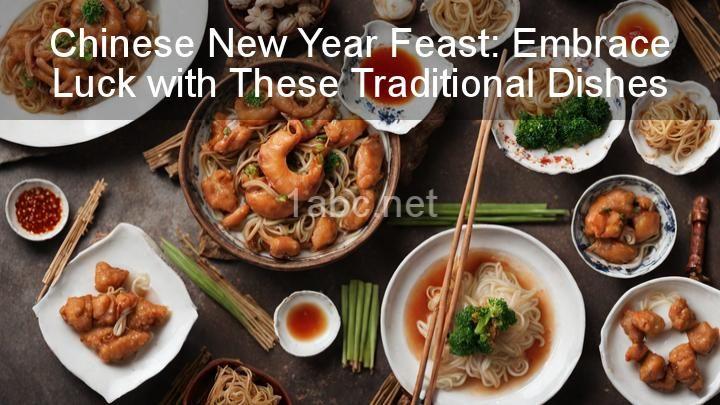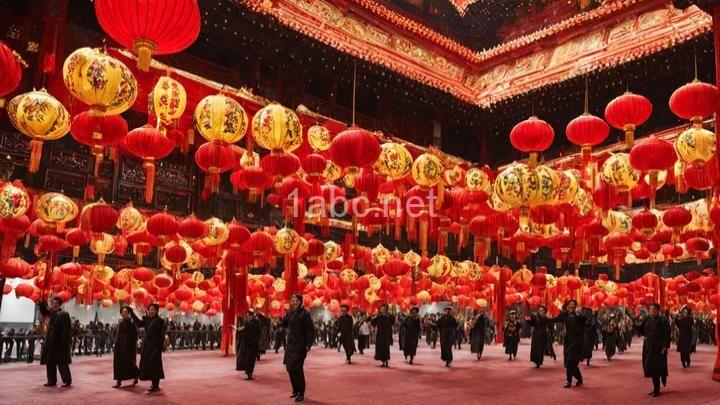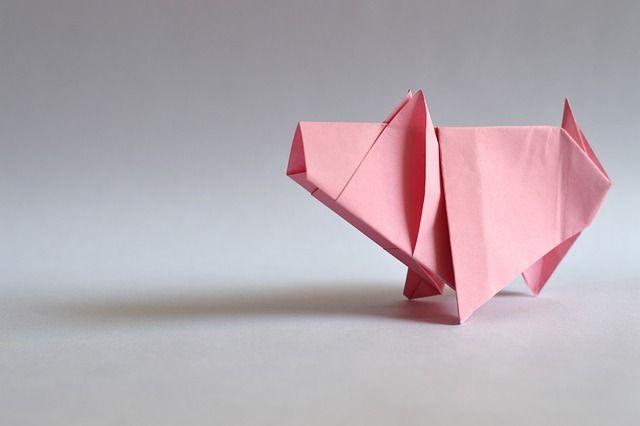Chinese New Year Feast: Embrace Luck with These Traditional Dishes

Introduction:
Welcome, dear readers, to this delightful conversation about the Chinese New Year feast. As we embark on another year filled with hope and promise, it is important to embrace the traditions and celebrations that bring us closer to our cultural roots. Chinese New Year, also known as Spring Festival, is a time of great significance for those who celebrate it. It is a time to gather with loved ones, pay respects to ancestors, and indulge in delicious food that symbolizes luck and prosperity. In this blog post, we will explore a selection of traditional Chinese New Year dishes that are not only mouthwatering but also carry auspicious meanings.
Section 1: Appetizers to Start the Celebration
The Chinese New Year feast begins with a delightful array of appetizers, representing the start of a prosperous and joyful celebration. These appetizers are believed to bring good luck and fortune to those who partake in them. Let's delve into a few traditional appetizer recipes that are sure to tantalize your taste buds and set the tone for an auspicious year ahead.
- Spring Rolls: These crispy delights not only symbolize wealth and prosperity but are also believed to bring good fortune. Filled with a medley of vegetables and sometimes meat, spring rolls are wrapped in thin spring roll wrappers and deep-fried to perfection. The golden color of the spring rolls represents wealth, making them a must-have dish for the Chinese New Year feast.
- Dumplings: Dumplings, with their crescent-shaped design resembling ancient Chinese currency, are considered a symbol of wealth and prosperity. They are also believed to bring good luck because their shape resembles gold or silver ingots. These delectable parcels can be filled with a variety of ingredients such as minced meat, vegetables, or seafood. Whether steamed, pan-fried, or boiled, dumplings are a staple dish during Chinese New Year celebrations.
- Longevity Noodles: As the name suggests, these long, unbroken noodles symbolize long life and are often enjoyed during birthdays and other auspicious occasions. During the Chinese New Year feast, longevity noodles are prepared and consumed to bring good luck and blessings for the coming year. The longer the noodles, the better, as they represent a longer and more prosperous life.
Section 2: Symbolic Main Courses for Abundant Prosperity
The main courses during the Chinese New Year feast are not only a feast for the senses but also a feast for good luck and prosperity. Each dish holds symbolic meanings that are deeply rooted in Chinese culture and traditions. Let's explore a selection of traditional main course recipes that are believed to attract abundance and blessings.
- Whole Fish: A centerpiece of the Chinese New Year feast, a whole fish symbolizes abundance and surplus. The Chinese word for fish, "yu," sounds similar to the word for abundance, making it a popular choice for this festive occasion. The fish is often steamed or braised and served with a flavorful sauce. It is customary to leave some fish uneaten to symbolize surplus for the coming year.
- Sticky Rice Cakes (Nian Gao): These sweet and sticky rice cakes are a must-have dish during Chinese New Year. The name "nian gao" sounds similar to the phrase "nian nian gao sheng," which means "rising year by year" or "continuous growth." This dessert symbolizes growth, advancement, and prosperity. The rice cakes are made by steaming glutinous rice flour mixed with sugar and sometimes flavored with ingredients like red bean paste or dates.
- Eight Treasure Rice: This colorful and decadent dish is symbolic of wealth and good fortune. It is made by combining glutinous rice with various ingredients such as dried fruits, nuts, and sweet bean paste. The number eight is considered lucky in Chinese culture, as it sounds similar to the word for wealth. The Eight Treasure Rice is traditionally steamed in layers and then served sliced, revealing the beautiful assortment of treasures within.
Section 3: Sweet Treats for a Sweeter Year Ahead
No Chinese New Year feast would be complete without indulging in sweet treats that bring a sense of joy and optimism for the year ahead. These desserts not only satisfy the sweet tooth but also hold cultural significance and auspicious meanings. Let's explore some delightful sweet treats that will surely bring good fortune and success.
- Tang Yuan: These sweet glutinous rice balls are often filled with ingredients such as sesame paste, peanut butter, or red bean paste. They are typically served in a sweet syrup and symbolize family togetherness and unity. The round shape of the tang yuan represents completeness and harmony, making it an ideal dessert to enjoy during Chinese New Year.
- Fa Gao: Also known as prosperity cake, fa gao is a steamed sponge cake with a light and fluffy texture. The cake typically has a cracked top, resembling blossoming flowers, which symbolizes prosperity and growth. The Chinese word for "prosperity" sounds similar to the word for "cake," adding to the symbolism of this delightful dessert.
Conclusion:
As we conclude this exploration of traditional Chinese New Year dishes, we hope you have been inspired to embrace these culinary delights and cultural traditions. The Chinese New Year feast is not just a meal; it is a celebration of luck, prosperity, and togetherness. By preparing and enjoying these auspicious dishes, we connect with our heritage and invite good fortune into our lives. So, dear readers, we wish you a Happy Chinese New Year filled with joy, luck, and, of course, delicious food. May this celebration mark the beginning of a year filled with abundance and prosperity!
FREQUENTLY ASKED QUESTIONS
What is Chinese New Year?
Chinese New Year, also known as Lunar New Year or Spring Festival, is the most important traditional holiday in Chinese culture. It marks the beginning of the lunar calendar, with the date varying each year between January 21st and February 20th. The festival spans 15 days, starting with the New Moon and ending with the Lantern Festival.
Chinese New Year is a time for families to come together, honor ancestors, and welcome the new year with festivities. It is characterized by various customs and traditions, such as feasting on special foods, exchanging red envelopes containing money (known as "hongbao"), and setting off fireworks to ward off evil spirits.
Each year is associated with one of the twelve Chinese zodiac animals, which rotate in a cycle. The zodiac animal for a particular year is believed to influence the personality traits and fortunes of individuals born during that year.
The celebrations include dragon and lion dances, temple visits, and people wearing red clothing to symbolize good luck and ward off evil spirits. Chinese New Year is widely celebrated not only in China but also in many other Asian countries and communities around the world.
When is Chinese New Year?
Chinese New Year, also known as Lunar New Year or Spring Festival, falls on different dates each year. It is based on the lunar calendar and typically occurs between January 21 and February 20. The exact date varies because it is determined by the new moon that appears between these dates.
What are some traditional dishes associated with Chinese New Year?
Chinese New Year, also known as the Spring Festival, is a joyous and important holiday celebrated by many people around the world. It is a time when families gather together to welcome the new year and wish for prosperity and good fortune. There are several traditional dishes that are commonly associated with Chinese New Year, including:
- Dumplings (Jiaozi): Dumplings are a staple food during Chinese New Year. Their shape resembles ancient Chinese gold or silver ingots, symbolizing wealth and prosperity.
- Spring Rolls: Spring rolls are a popular snack during Chinese New Year. They are often filled with vegetables, meat, or seafood and are deep-fried until crispy.
- Fish: Fish is a must-have dish during Chinese New Year. The Chinese word for fish (Yu) sounds like the word for abundance, so it is considered lucky to have fish on the table.
- Nian Gao: Nian Gao, also known as sticky rice cake, is a sweet treat made from glutinous rice. It is believed to bring good luck and is often offered to the Kitchen God to ensure a sweet and prosperous year.
- Tang Yuan: Tang Yuan are sweet rice balls filled with various fillings like sesame, red bean paste, or peanuts. They are usually served in a sweet soup and symbolize reunion and togetherness.
These are just a few examples of the traditional dishes associated with Chinese New Year. The variety of regional cuisines in China means that there are many more delicious dishes that are enjoyed during this festive season.


